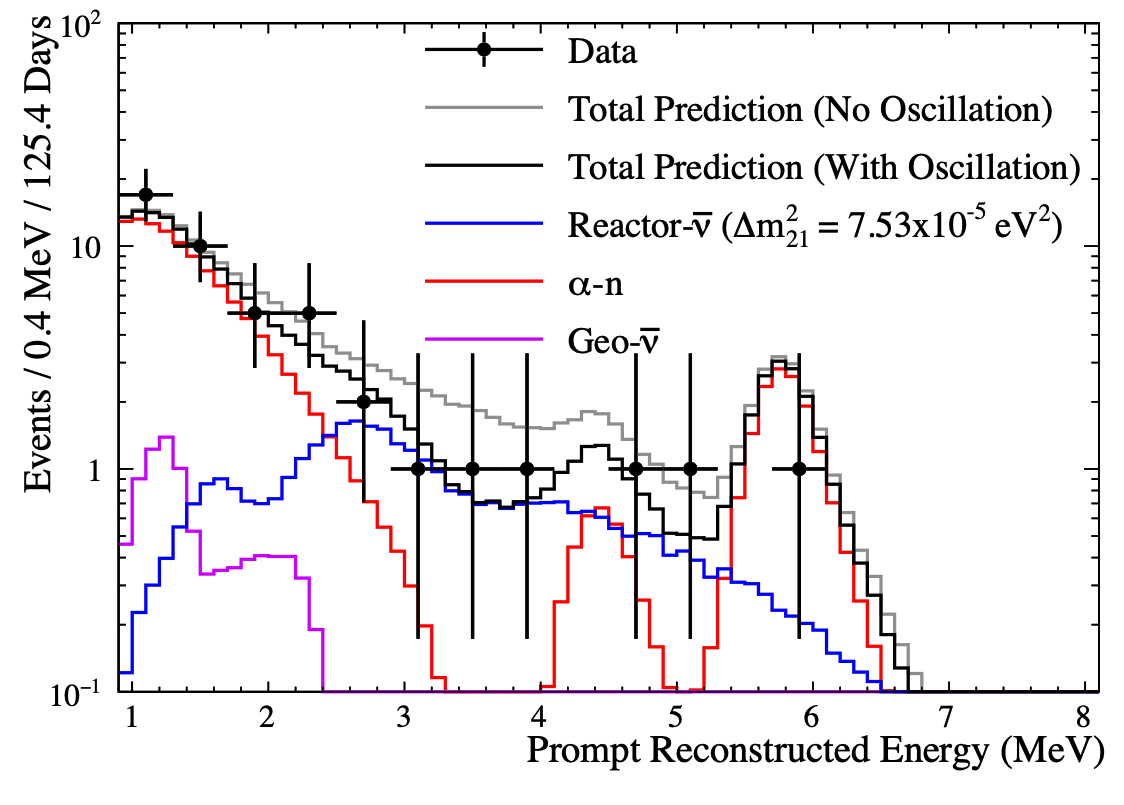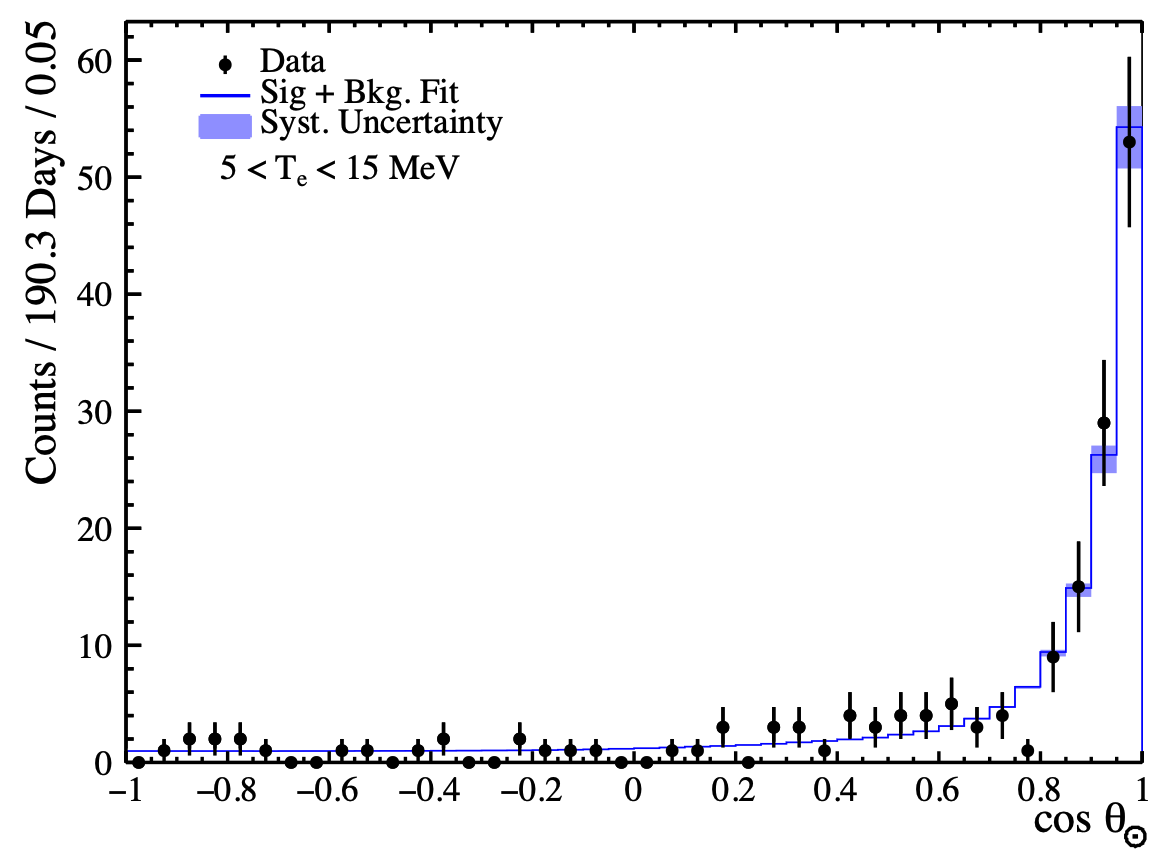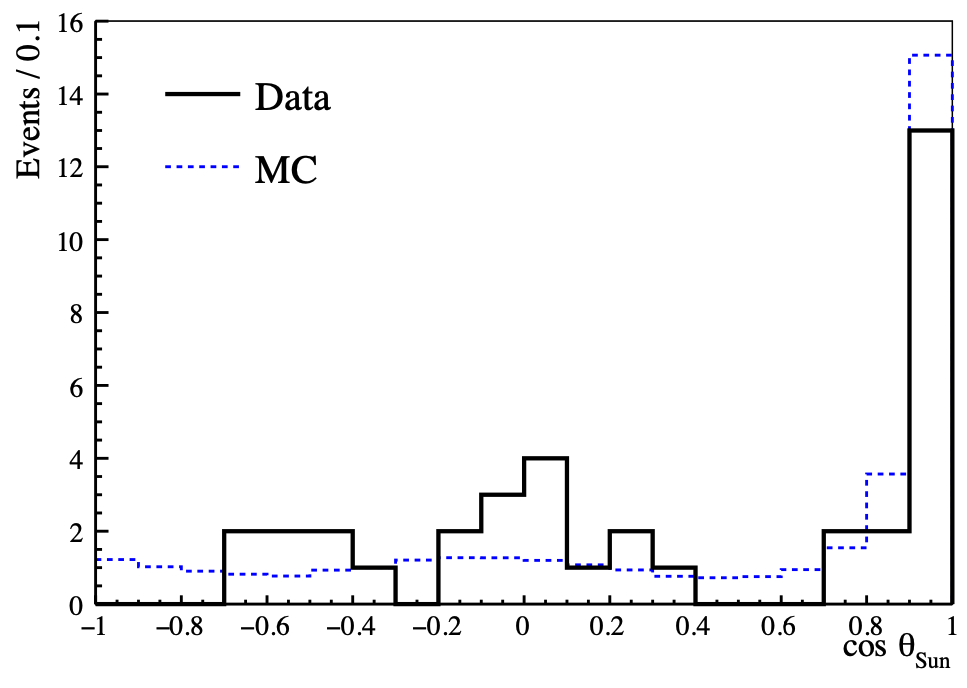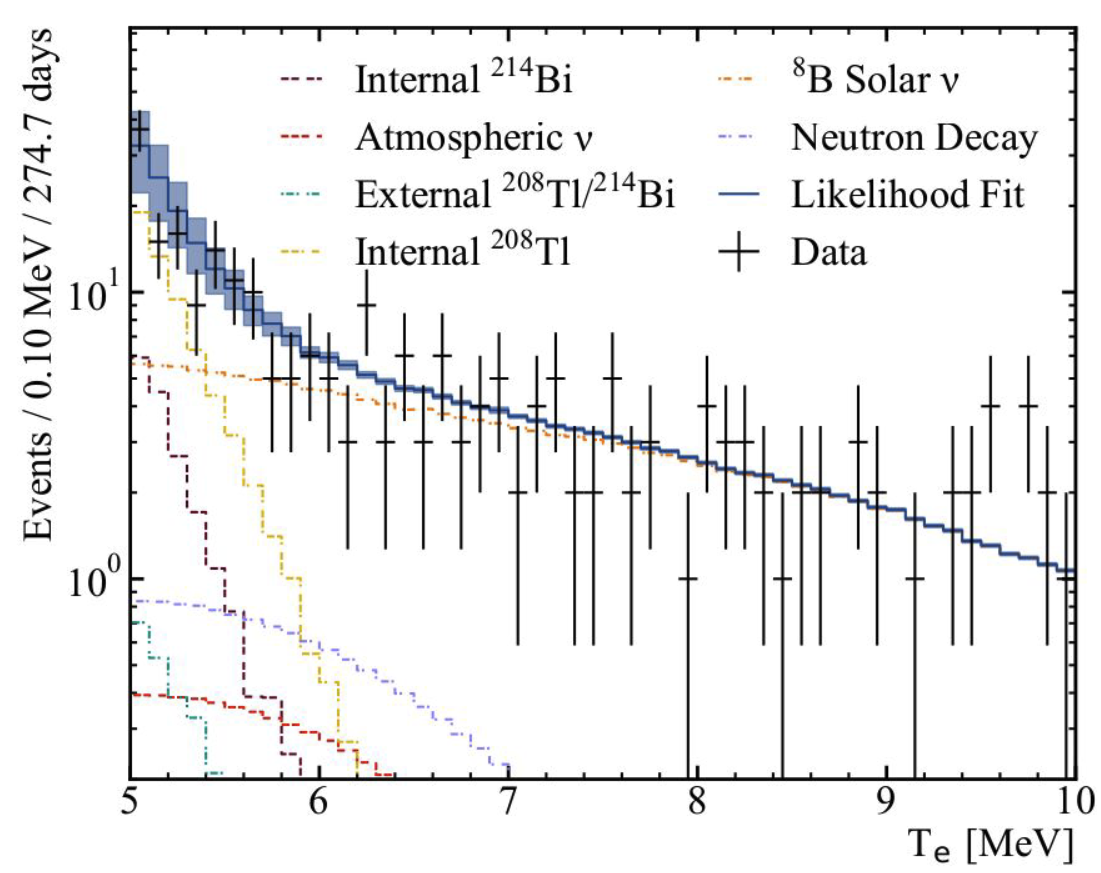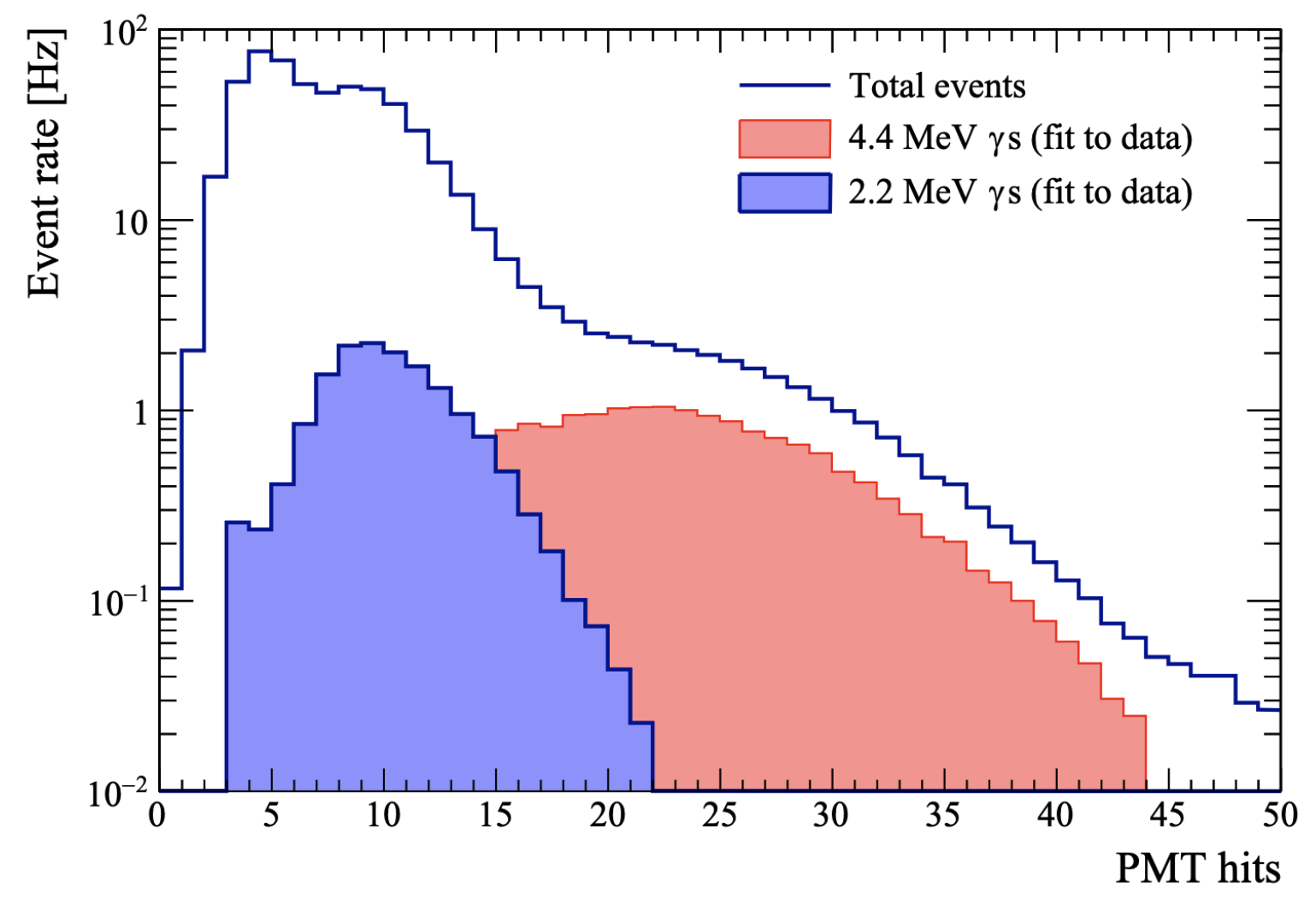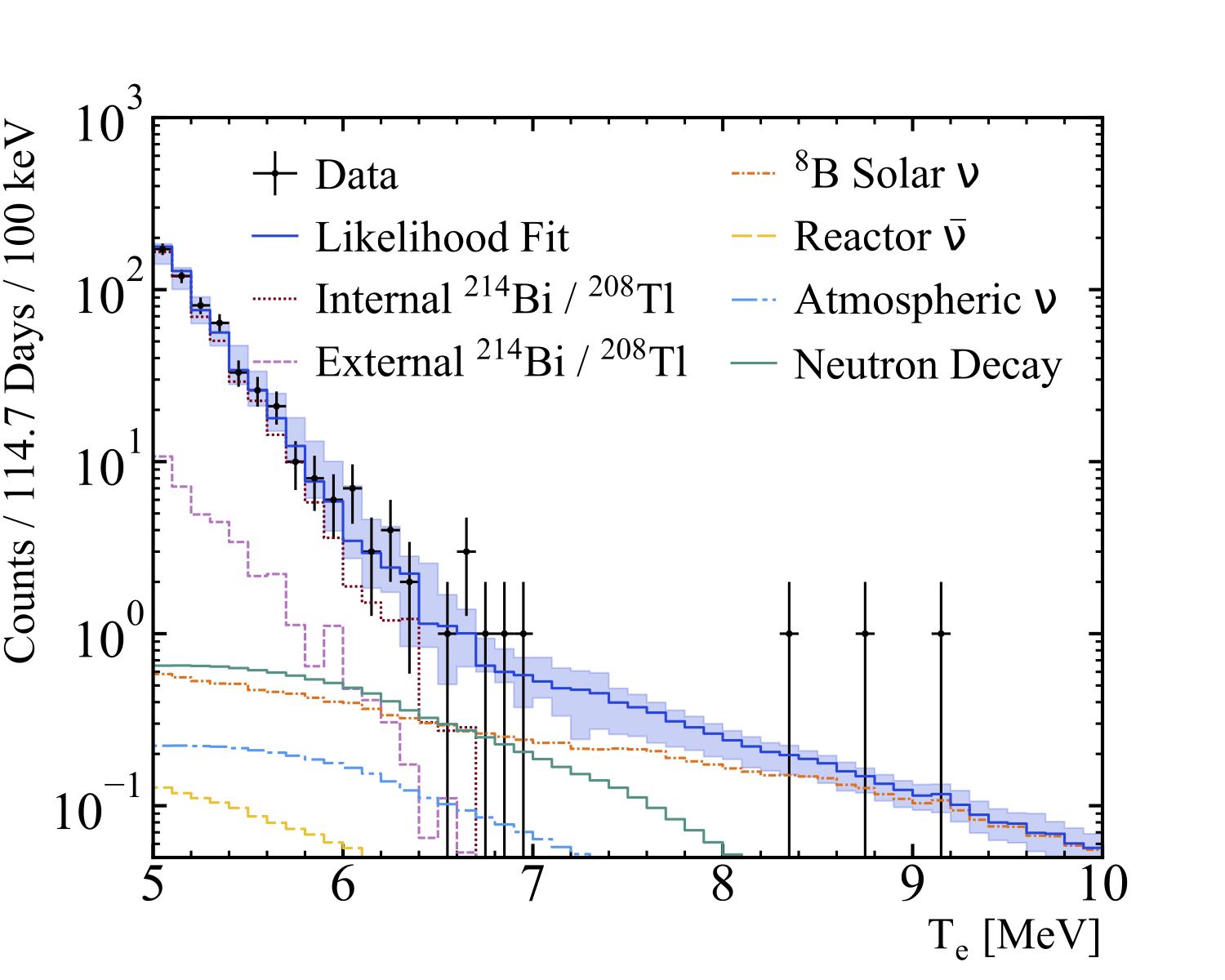We have performed an initial spectral analysis of long-baseline reactor antineutrino oscillations using 114 tonne-years of data. Fitting the neutrino osctillation probability to the observed spectrum yields constraints on ∆m221. This continuing measurement is expected to surpass the present global precision in ∆m221 with 3 years of data.
We have achieved the lowest background solar electron scattering signal above 5 MeV to date. This was possible after implementing a sealed cover gas system midway through water phase data taking, which resulted in a significant reduction in 222Rn in the detector. The measured 8B solar neutrino flux was found to be in good agreement with previous measurements and the Standard Solar Model calculations.
By separating prompt, directional Cherenkov light from slower, isotropic scintillation light using time information, a maximum liklihood method was used to reconstruct the direction of individual scattered electrons. A clear directional signal was observed, correlated with the solar angle. This is the first time that event-by-event direction reconstruction in a high light-yield liquid scintillator has been demonstrated in a large-scale detector.
We have identified antineutrinos from nuclear reactors located at least 240 km away using pure water. This is a world first which pushes the capabilities of the established and highly-successful technology of large water Cherenkov detectors. This result could also impact approaches to nuclear nonproliferation.
Having a large volume of ultra pure water (around 10-16 - 10-15 g/g U and Th) has enabled us to improve previous SNO+ limits on “invisible” nucleon decay modes that are predicted in some Grand Unified Theories. Our experiment has world-leading limits on neutron and proton invisible decay modes, as well as the best limits for pp and np di-nucleon decay.
Starting in September 2017, we lowered the trigger thresholds such that we were able to detect 2.2 MeV gammas (characteristic of neutron capture on hydrogen) in the center of SNO+ with around 50% efficiency. This is the highest efficiency achieved among pure water Cherenkov detectors. In the analysis, the neutron capture time constant was measured and converted to a thermal neutron-proton capture cross section of 336.3+1.2-1.5mb. This result is compatible with the last published measurements from the 1960's and 1970's, which were made using very different techniques in smaller dedicated experiments.
We have performed a search for nucleon decay through "invisible" modes, where no visible energy is directly deposited during the decay itself, during the initial water phase of SNO+. These decays within the oxygen nucleus would produce an excited daughter that would subsequently de-excite, often emitting detectable gamma rays. A search for such gamma rays at a 90% Bayesian credibility level yields world-leading measurements in multiple mono- and di-nucleon decay modes.
We have performed a measurement of the 8B solar neutrino flux using a 69.2 kt-day dataset acquired during the initial water commissioning phase of the detector. At energies above 6 MeV, the dataset has an extremely pure sample of solar neutrino elastic scattering events, owing primarily to the detector's deep location, allowing an accurate measurement with relatively little exposure. Fits of the solar neutrino event direction yielded an observed flux consistent with matter enhanced neutrino oscillations and measurements from other experiments.
